On May 6, 2024, philosopher Olúfẹ́mi O. Táíwò joined Rethinking Schools executive director Cierra Kaler-Jones and editor Jesse Hagopian to discuss his book Reconsidering Reparations.
This session was part of our monthly Teach the Black Freedom Struggle online class series. Don’t miss upcoming sessions — register now.
Táíwò discussed the “ancestor perspective” and “constructive” reparations to help us meet the climate crisis. He said that it is impossible to tell a meaningful story of the last 500-plus years without emphasizing resistance — that oppressed people have always had their hands on the steering wheel of history. And that is true today, too. It is what we mean by a people’s history of the United States. Listen to a two-minute excerpt from his talk:
Participants shared what they learned and the impact of the session:
It’s so easy to get caught up in resisting current laws and systems. This conversation compels me to keep in mind the vision of a future world as a motivator as well.
Olúfẹ́mi’s point that the climate crisis will offer many political opportunities to reconstruct the world — and the question of who will be organized to take advantage of those opportunities — is a critical one. We need to be organizing for these moments now.
Inspired by Táíwò’s remarks, my breakout group was a festival of connections. People said they want to figure out how to teach about how Columbus is connected to Hurricane Katrina is connected to the water crisis in Flint — that this is our challenge as teachers: to develop curriculum that helps students grasp how all this history is connected. It is the legacy of colonialism and racism, and that is what students need to explore.
The idea of Reparations and repairing the world seems like such a huge task when there are so many issues to address. It can be overwhelming. But, one of our breakout group members reminded us that it’s about small steps to get it started and about educating the next generation to move it forward.
I loved the idea of teaching local history and connecting it to systematic issues of climate, ecology, and finance.
Understanding something as recent as Hurricane Katrina requires us to study and make connections to history from centuries ago, because to understand the inequities we see today we must contextualize them within the history of the systems that produced those inequities.
Thank you for this session. I’m feeling overwhelmed with all that is going on in Houston with a state takeover. This session was like drinking a clean glass of water; it was what my teacher soul needed.
I need to look at climate justice, Reparations, and Land Back from a more global historical perspective. Many students think this is something that is happening at the current moment, but these issues and problems have a long history.
We can and we must rewrite the story.
Event Recording
Recording of the full session, except for the breakout rooms.
Transcript
Click below for the full transcript with resources mentioned in the discussion.
Transcript
Jesse Hagopian (he/him): I’m happy to welcome Olúfẹ́mi O. Táíwò, associate professor of philosophy at Georgetown University, and author of Reconsidering Reparations and of another great book I highly recommend, Elite Capture. Thank you so much for being with us today.
Olúfẹ́mi Táíwò: Thank you for having me.
Hagopian: Right on. I’m looking forward to this conversation. Let’s just jump right in. I love this book. Your chapter titled “What’s Missing” begins with a historical account of colonization and the invention of systemic racism — what you call “global racial empire” — that contributed to the creation of the institutions and the systems that maintain systemic racism and inequality.
I just want to quote one little passage from what you wrote. You wrote, “This global racial empire did not result from the first systems of torture, discrimination, slavery, or apartheid. It resulted from the first systems to enact those atrocities at a world scale.” So, I’m just thinking about how important that lesson is, and how I wish that everybody learned that lesson. But right now, unfortunately. legislators and school board members around the country are passing laws to ban the teaching of this kind of history. In fact, today almost half of all students in the United States are subjected to a law that tries to get teachers to lie to students about systemic racism. So, I was hoping you could tell us about that history that I just quoted, and about why those in power fear people learning that history.
Táíwò: Yeah. There’s a lot to say, but maybe I’ll just start with a few things. We have not always lived in a world system that is new in human history. There have been very large networks of trade and politics and cultural exchange. Much of the Americas, or Turtle Island, were linked in networks of trade and cultural exchange. Much of the eastern coast of Africa and the Indian subcontinent were linked in trade and cultural exchange. Much of Europe and Asia were linked in trade and cultural exchange. But none of those were planet sized systems. What that meant, among other things, is that there was only so large an economy you could build. There was only so large an empire you could build within those kinds of networks.
But whatever else Christopher Columbus did in 1492, he ushered in this era where it was possible for the first time to have imperial control over the planet. The first time that all the continents of the world were linked in trade was in the following century, the 1500s at least, according to economic historians. The result of that was that by the lead up to the Second World War the British Empire alone controlled a quarter of the world’s land mass and population. That would not have been possible at any other point in human history. And I bring up all these points about scale for exactly the reason that you helpfully set up with introducing that quote.
I don’t think that the Roman Empire was made up of better people than the British Empire was, any more than I think that the French Empire was made of better people than the Mongol Empire. There is an urge to domination and destruction that — at least so far — has always been with us in politics. But, for the first time it poses an existential threat not to particular groups of people, but to people. That’s what we’re talking about with the climate crisis already. We withdraw a number of gallons of groundwater and that changes the literal distribution of mass of the earth. We’ve polluted the sky to the point where it is changing the climate and weather patterns. We have polluted our bodies. The ongoing scientific research about plastic pollutants, PFAS, shows that rain water across the entire planet is measurably polluted to some degree or other with that contaminant and or others. So, I’m really trying to make the point that we have to contend with the massive scale of economic, ecological, and political destruction that is possible now, not because of a night and day moral difference between people now and people a thousand years ago, but because of a night and day difference in the scale of politics, the scale of technology, the scale of destruction that is even possible. And whatever we have to say about justice, it has to contend with that scale of injustice.
Hagopian: Yes, thank you.
Cierra Kaler-Jones (she/her): Yeah, wow, absolutely. Given this history of global racial empire in Reconsidering Reparations, you argue for what you call “constructive Reparations” as you’re talking about this massive injustice. So, can you talk a bit about what you mean by a constructive view of Reparations, and how is this view different from other approaches to Reparations such as harm repair or relationship repair views of Reparations?
Táíwò: As you point out there, I break up Reparations into three families. The harm repair family of view says that Reparations should make the recipients of Reparations better off. So, whether it’s cash payments or land transfers, there should be some measure of welfare, of how well off the recipients of Reparations are. That’s the kind of metric we use to judge Reparations projects, and that’s the purpose of the projects, as well.
The second view, relationship repair, says that we might like cash transfers, we might like land transfers, but we also might like apologies. We also might like reconciliation campaigns. What any of those should be producing or driving at is reconciliation as a kind of renewed relationship between the recipients of Reparations and the people giving Reparations — whether that’s one community to another community, or maybe a national government to another community. But repairing that relationship is the point of Reparations. and I think there’s a lot that those views get right.
But I prefer the constructive view of Reparations. We should be building not just physical buildings or even institutions — though those are things we should be building — but what we should be trying to repair is the world. So, the story I just told about constructing a planet-sized system of injustice, domination, and colonialism, that’s the thing Christopher Columbus did. And it’s that scale of harm, it’s that scale of political network that is the global racial empire. And it’s that scale of politics that is responsible, I think largely, for what people’s political reality is. It’s not just the U.S. Congress or not just a city council in Baltimore or Atlanta that determines what people’s lives are like. It’s these global economic realities. It’s these global political realities. And I think change at that scale is necessary for change at the scale of our individual lives and our families. I think that’s what people want.
Hagopian: Yes, I love that. You just get to the heart of the matter. The problem is a worldwide scale, so our solution has to be as well. It’s just so spot on. Thank you for building a framework, for helping so many people understand that as a method for helping us figure this problem out.
You liken the world economic and political order to a web of aqueducts that span the globe, channeling instead of water advantages and disadvantages from one place to another. I really think this is such a powerful metaphor for these complex systems that span the globe across several centuries. So, could you talk more about this aqueduct metaphor and how it helps us understand and address the power dynamics of the past, the present, and the future?
Táíwò: The basic thing that I’m trying to describe with the aqueduct metaphor is accumulation. I think we often get caught up in these sorts of small histories. We try to say, “Well, why is it that this person is rich and that person isn’t rich? Well, the rich person hustled. The rich person took chances and went into business, whereas the other person just settled for the 9 to 5 that everybody else settled for.” I don’t want to say that no individual decisions matter, but I think if we look into the structural realities that explain where people are starting, we’ll see the kinds of things that I think many of us in this room are often making the point about — some people start on third base, and some people start beneath the dugout.
And we shouldn’t pretend that the differences in who ends up in jail and who ends up on the Forbes 500 list is some meritocratic response to the deep virtue of different people. People have different advantages and those come from history. Those accumulate across generations. Some people were permitted to invest hundreds of years ago, and they held onto the wealth that came from those investments and passed it on to their children, and passed it onto the people that live in close geographical proximity to them, and passed it onto the people who were legally allowed to participate in the educational structures and the political structures and the wealth building structures where all this wealth accumulated.
If we look at which people in those stories were accumulating the wealth and which people were being plundered from for that wealth to be accumulating, we’re going to see a story that is exactly the story that many scholars of race for generations and generations have been saying. The concentration of poverty, the concentration of violence — especially from the state — in Black communities, particularly those descended from the enslaved in the Americas, is extremely related to the same counterpart processes of wealth accumulating for the Rockefellers and the Carnegies and all the people on the other side of these same political and social relationships. If we want to do something about that then we have to do something not just about what number is in which person’s bank account today, but the system that explains what numbers in whose bank account today. We’re not a check away from changing the structure of our economy or the structure of our politics, and I think we have to take that seriously.
Kaler-Jones: Yes, and as you talk about these structures and systems, to bring us to a particular example that you write about in the chapter “What’s Next?” you provide an overview of history that led to the devastating outcomes for the people on the Louisiana coast when Hurricane Katrina made landfall on August 29, 2005, especially for the poor and Black folks like you were just talking about. You start this history with Columbus, which you talked about a little bit earlier, so can you take us through this history that ultimately explains what happened to Black New Orleanians who were abandoned after the storm, and how do you connect it to the history of Columbus and the Taíno people?
Táíwò: So, when Columbus got lost at sea he ended up in what he called the West Indies and very quickly got on a campaign of mass murder and enslavement. All that was in search of various things, but one of the big ones was precious metals like gold, especially silver, above all. But, a lot of these early sea voyages were looking for new silver mines and European empires as we think of them now were kind of middlemen in a global trade. The demand for that silver, globally speaking, was largely China. So it’s not as if we started off this series of history where European colonial powers were the only civilized or only smart people in the world. They were just people like anybody else. But this kicked off a series of changes that caused political shifts that caused economic shifts that built the power that became what we think of as Europe now.
So, as they colonized these parts of the world — the Caribbean, the North American east coast, and into the interior of South America and parts of Africa’s southern coast — they built networks of trade that were larger and larger. They found more and more resources, and they were able to build these networks of territory into economic powerhouses, helped along by, of course, the Transatlantic Slave Trade and the plantation system of agriculture that they cultivate. So, all these things work together to develop an immense amount of wealth for a few.
For a while it was just an immense amount of wealth for a few, but it helped spur technological changes that caused what people call the industrial Revolution. And those changes created capitalism and created a runaway increase in the amount of economic production that was possible, and that created still more wealth. I’m noticing Michelle is pointing out in the chat that people should check out Eric Williams’s work, which I 5,000% agree with. He was one of the scholars who was instrumental in putting this together for me and for countless other scholars.
So, as this wealth gets built, it’s building colonies around the wealth and around the economic systems that are producing the wealth. Among those are colonies in what is now North America and the Caribbean. The major empires that control these colonies are the French Empire and the Spanish Empire. Later on there is an independence movement by the American colonists, who get very angry about tea and stamps and so fight for independence from the British Empire.
Around the same time, just a few years later, there’s another revolution by enslaved people in the colony of Saint Domingue, which we now know of as Haiti. They defeat Napoleon’s forces in the field, so the French Empire decides to give up on this whole half of the world, and they sell a major portion of their holdings in this part of the world to the newly independent country of the United States in what is called the Louisiana Purchase (because it included Louisiana). So, the inclusion of Louisiana in the United States is, I think, fairly directly connected to the history of global racial empire through the Haitian Revolution.
The development of Louisiana as part of the U.S. economic apparatus is tied to another major development which is changing energy systems. Coal and steam were important parts of the fuel of the Industrial Revolution in the 1800s, and as oil was discovered in Louisiana that became a major engine of economic activity in the U.S. Gulf South. So they carved canals, they destroyed marshlands, they created pipelines, all of which was to exploit the oil wealth of this region of the country. All those ecological changes changed the susceptibility of the Gulf coast to implement weather and to hurricanes. All the emissions from that activity, like activity in the rest of the world, created the climate conditions that supercharged the hurricanes that now this section of the world is more and more susceptible to. Those pathways converge together in what we know of as Hurricane Katrina, which caused immense depth and destruction across the Gulf South, including, of course, New Orleans, which was hit particularly hard. That, in turn, created a political opportunity for people who wanted to reshape the Louisiana education system and the housing system, and even the demographics of the City of New Orleans, in a much different direction than it had been historically.
Hagopian: Thanks for breaking all that history down. I mean, to understand Hurricane Katrina you have to go back to Columbus, and that’s how we want our students to think, to be able to see the connections throughout history that led up to this moment. That’s exactly what they fear about studying this history. So thank you for that. I love how you connect it to climate change. Storms like Hurricane Katrina, as you pointed out, are occurring more frequently and with greater intensity because of global heating and the climate crisis. You argue in the book, quote, “A politically serious Reparations project, at least one fitting the goals and ethos of the constructive view, must focus on climate justice.” So I’m hoping you can explain that connection.
Táíwò: Yeah. I’ll just stick with New Orleans as an example. But I think we could find more examples like this. So, among the things that happened after New Orleans experienced Hurricane Katrina was a huge shift in the demographics of the city. There was a racially specific recovery. White homeowners, for instance, were more likely to be serviced by federal disaster insurance programs. And white citizens were more likely to be homeowners in the first place. That contributed to the racially uneven recovery. The actual literal physical ecology of the city changed. Hundreds of thousands of tree canopy covers were lost in the years between 2005 and 2009.
All of this adds up to an unequal recovery and an unequal trajectory into the future, especially when you sit both of those next to a political story where the specter of school choice and the ongoing debates about charter schools became very serious. The charter school push was a concerted effort from people who were able to use the destruction and the political opportunity of the rebuilding effort after Katrina to build the new New Orleans, post-Katrina, in the educational direction that they wanted. So, whether it’s the education system, the literal tree cover, or even just the demographics of who is able to return to the city in the first place, all those break down on racially specific dimensions. And I think that is going to be the story of the 21st century.
We are increasingly seeing on the level of climate disasters, racial disparities in who’s vulnerable to climate disasters. But, maybe just as importantly, we see racial disparities in how the political system responds to those disasters. In this case, which people get disaster insurance and which people don’t. We get, maybe most worryingly, racial disparities in who is positioned to wield political resources, to do the reconstructing of the world that will have to happen in the wake of disasters.
So, there are people that want various kinds of education reform in New Orleans, and had wanted for generations different kinds of education reform, but only some people were well positioned to capitalize off a crisis, to push things in their direction. You can read Naomi Klein’s Shock Doctrine, and she lays all this out really, really, clearly and really well. But, those were the forces of the political right, and they were not interested in racial justice on any terms, much less terms that I think those of us in this room would recognize as a genuine commitment to racial and economic justice. Specific protections from climate impacts will be racially specific, but the political opportunity to reconstruct the world that comes with the climate crisis is an opportunity to undo what was done before.
One of the things that I stressed in the book was learning from the Reconstruction period of U.S. history and the backlash too that undid a lot of the progressive gains of the Reconstruction era. I think that is the kind of crisis we’re faced with with the climate crisis. Unless we get out ahead of those kinds of political battles, the forces that are hostile to racial justice are not just going to win out from the climate crisis, but they’re going to win out from a political crisis that comes from climate disruption. I would argue that we’re seeing this in the present day. The crackdowns on campuses are a trial run for the kind of authoritarianism that I think some people have long wanted any excuse to institute and are getting an excuse now in the form of a political crisis, but very easily could be getting the same kind of excuse in the wake of an ecological crisis, like a hurricane or climate-based displacement, which we’re already seeing people anticipate in anti-immigration rhetoric. So, I think this is where our head should be at.
Kaler-Jones: Wow! All of those connections, and especially what Jesse was talking about earlier. It’s really, really powerful to think about and to teach students to be able to make those critical connections. You’re talking about what’s happening on campuses today, and these are the things that we have to be talking about and we have to be teaching about. This is really powerful.
[breakout rooms]
Hagopian: Welcome back!
One way you can support teachers in bringing this history to the classroom is with our Teaching for Black Lives study groups that we have all over the country. We have more than a hundred Teaching for Black Lives study groups this year. Many of the members and leaders of those groups are in this session with us today. The applications are now open for study groups next year, and we are dropping that link in the chat. Please consider applying to join a Teaching for Black Lives study group. It’s critical, especially in this era when they are attacking our right to teach the truth about structural racism.
We encourage you to sign up today as well for the fourth annual Teach Truth Day of Action. In this election year we need to reach as many people as possible with information about the chilling effect of the anti-CRT laws and invite everyone to defend the freedom to learn event. Hosts can receive pop up displays with banned books, buttons, postcards and posters, and more. The activities can vary from an info table to a history walk to a community fair at your school. I hope that everybody will think about joining or hosting an event for the fourth annual Teach Truth Day of Action. This is such a critical component of building a movement that can defeat these anti-history laws and build a school system worthy of our students.
Kaler-Jones: Yes, and to give us an example of what this looks like in practice, I’m so excited to invite Dr. Vicki Butler, dean of the School of Education and Leadership at City University in Seattle, to share why and how she has brought Teaching for Black Lives study groups to her faculty and students for the past three years. So, hi Vicki, it’s so good to see you.
Vicki Butler: So good to see you as well, and shout out to group one just in case they didn’t get their shout out.
Kaler-Jones: We love it. Where are you based, and about how many people participated in your Teaching for Black Lives study group?
Butler: We’re based in Seattle, where we have both teacher and admin preparation programs, and other certification programs. Over the years we’ve had 25 to 30 faculty members actively participate in our Teaching for Black Lives study group. That has impacted countless students and other faculty in tons of different ways.
Kaler-Jones: That’s incredible. Wow! Can you tell us a little bit about your experience hosting Teaching for Black Lives study groups?
Butler: The Teaching for Black Lives study groups have inspired interest from faculty and students to continue conversations. Endless conversations. At our school, we are currently revising our programs around antiracist teaching and decolonizing curriculum. Some of our study group members have participated in recreating our school vision and mission statement, which is critical. The Teaching for Black Lives study group has inspired our graduates and new colleagues to follow up with the study group. Beyond the degree, using The New Teacher Book is phenomenal. It’s phenomenal. I mean truly, imagine those conversations that occur in the classroom, outside of the classroom, in our teachers’ classrooms. We have faculty offering to host more Teaching for Black Lives study groups and other beyond the degree groups for us. We’re super excited.
Kaler-Jones: I love that you all are extending the study group to The New Teacher Book. That’s so beautiful. You also signed up to host the Teach Truth Day of Action this year, so could you tell us a little bit more about what you’re organizing?
Butler: Sure. We have a Teach Truth event on all four of our campus locations. We have a campus in Seattle and then satellite locations. Each campus has ordered their pop-up display from the Zinn Ed Project, and there will be discussions, small group activities, and courses. We brought in the courses because it’s also a teaching day for us. There will be conversations, chocolate — every teacher needs chocolate, and future teachers — resources, banned books to share, opportunities to connect with others, and to bring that conversation back to their own teaching communities and to their own practices.
Kaler-Jones: Wonderful. Thank you. This is so inspiring. We appreciate you, Vicki, and thanks for all of the work that you’re doing. I hope that others on the call are getting some ideas about how you might use the Teaching for Black Lives study groups and/or participate in the Teach Truth Day of Action.
Butler: Thank you so much. You guys do phenomenal work, phenomenal work.
Kaler-Jones: Thank you.
Hagopian:Thank you, Vicki. Great to hear from you. Alright! Well, let’s jump right back into it.
There’s so much more to learn from this book, so I want to dig into thinking about how Reparations connects with Indigenous peoples here, as well. Olúfẹ́mi, you write that “a typical first step of colonialism involves control over territory.” Can you talk more about the constructive Reparations view of the Indigenous demand for Land Back.
Táíwò: From my perspective, I think the logical extension. I think there is a deep affinity between Land Back and this way of thinking about Reparations. The best example I have of those things fitting together was a radical movement in the sixties.
There was a group that put itself together under the title of the Republic of New Afrika, and their idea was to secede from the United States and occupy some section of the Black Belt states. The way that they articulated that was for the U.S. to withdraw its sovereignty over those states, as step one. Step two would be to facilitate a sit down between Indigenous nations and the Republic of New Afrika. When you take up the constructive project, then you have all these practical dimensions, like “What are the other claims to justice that are out there, and how do we position ourselves with respect to those? Can we do that on the basis of solidarity?” At least for the Republic of New Afrika, they were holding out for the hope that whatever they built in the Black Belt would be a kind of collaborative, negotiated thing between themselves and Indigenous nations. I think that’s the kind of ethos that we need to have in mind.
I didn’t put it this way when I wrote the book, but I can’t avoid saying it this way now: As the war rages in Gaza, I think if you have the perspective that Reparations — and in general a response to oppression — is just about what you get or is just about what your group gets, then I think Israel is the logical conclusion of that approach to politics. I think one of the things that I found so inspiring, I think the dominant strand of African American politics has been the kind of thing that the Republic of New Afrika has insisted on, which is, how do we get justice for us that aligns with justice for other people? I think that is a deeply important commitment, and it’s one that we should learn from, I think.
Hagopian: Beautiful. I love how you connected that. I also just wanted to say that Professor Jeanne Theoharis, who helped launch this series, taught me a lot about the Republic of New Afrika, and the fact that Rosa Parks was a huge advocate and actually worked to support them when they were imprisoned for doing that. So, thanks for sharing that history.
Kaler-Jones: Yeah, that’s really important history. I saw in the chat before we went into breakout rooms that a lot of people were excited about digging into what do we do now? What do we do next? I think one of the things that really struck me in Reconsidering Reparations is that you encourage everyone to act like an ancestor, which is really a beautiful framing. And this is just brilliant advice to help each generation meet the struggles in front of them, especially the climate crisis, since that’s a significant struggle and a central struggle of our time. So, can you talk a little bit about the ancestor perspective?
Táíwò: The biggest thing that I’m trying to get across with the ancestor perspective is trying to appreciate another version of scale from the one that we’ve been talking about. We started this conversation talking about how important it was that these economic and political systems got built on a planetary scale — so huge, the size of the earth in terms of space. But, I think if we think in terms of time as well, then we also find an important aspect of scale.
It took generations from the European empires to go from middlemen in a global silver trade to being on top of the world. It took generations for the system of plantation slavery to develop, and it took generations to abolish it. I think we should be thinking on that time scale with the kinds of things that we’re thinking about. Even in response to the climate crisis. Just a few moments ago I gave the example of a tree canopy in New Orleans. Well, the life cycle of trees, depending on the species, can take decades to reach maturity. We’re not talking about sending someone a check tomorrow and having that instant transfer into their bank account. That’s a thing we should do. It should be near the top of the list, if not at the top of the list, but changes to infrastructure, both in terms of physical infrastructure and changes to our political infrastructure.
What’s the balance of power between political parties? Is there a worker’s party? Are there strong institutions outside of the electoral system that can hold politicians to account? Those things don’t get developed overnight. One of the things in our corner is the fact that we have this deep well of knowledge and know-how, and organizations that have been around for a long time. Somebody mentioned in the chat that the RNA is still here. The NAACP is still here. The Highlander Center is still here. There’s all these organizations and all these elders that I think are importantly part of the long term visioning process that we should be doing.
I’ll just mention one more to finish off here. The Deep South Center for Environmental Justice is organizing a consortium across HBCUs, especially in the South, to start putting together a vision of what a reconstructed Gulf South that was racially just just might look like, and really putting research behind that, putting advocacy behind that, and trying to put power behind it as well. I think that’s the kind of thing that is well worth knowing about and well worth supporting.
Hagopian: Right on. I really appreciate that conversation and think we have time for a couple of more questions. I’m looking at the chat and just really impressed by how much there is, and how much people are really processing this all and bringing so many other insights. We are trying to do something that really hasn’t been done, to repair the whole world and lift everybody up in the course of that struggle. You write about this idea of anti-colonial activists engaging in a project of world making. I love how you frame that! How do you go about constructing a new world based on racial, economic, and climate justice? I wanted to get your thoughts on how we begin that project or continue that.
Táíwò: I brought up the examples of the RNA and the Deep South Center for Environmental Justice because I think the scale of communities and regions is probably the place to start, where people share enough of a kind of cultural memory and present political reality, geographic reality, ecological reality to kind of pick goals that people connect to meaningfully and not just in the abstract. But, what can we decide on based on how we tell the story of ourselves, about our water, about our bridges, about our sea walls. I’m really encouraged by the work that those organizations and organizations like them are doing.
But I think the thing I want to stress about the constructive view is that I mean it literally. And I’m a philosopher by training; I like abstract concepts. I think often, maybe because of how I talk or maybe just because that’s my background, when I say the constructive view, I think people think that I’m speaking in metaphor. I’m not, even a little bit. I think the projects we should be thinking about are what electrical grid should we be setting up and who has political power over it. What institution are we going to create to have political power over it? So, public power initiatives like that one in New York is the kind of thing that I’m talking about. What do we want to do about water? Do we want green roofs? Do we want swales? Do we want to connect those to the sewer system or supplement the sewer system with that, or expand the sewer system? Literally, these are the kinds of construction projects that I’m thinking about when we ask questions like which people are at highest risk of heat waves, which people are at highest political risk of being left behind in the case of hurricanes, like we’ve already talked about it, and we ask most importantly what we want to do about those things and not just why those problems are unjust, it’s construction problems that are on the other side of that. Construction initiatives are on the other side of that. We need insurance systems that work differently; we need sea walls and coastline protections that work differently; we need electrical systems and energy distribution systems that work differently, where people aren’t getting their ACs cut off in heat waves or their heat cut off in cold snaps because they can’t afford to pay their bills. It’s that kind of brass tax, practical decision making and a politics of justice and equity behind that brass tax decision making that I am calling for.
Kaler-Jones: I love that, and I appreciate that you are talking about the dreaming aspect of world building, and what that calls us to do is actually think about the practicality of this. What does it look like to put this into practice? As you had previously talked about, acting like an ancestor. Talking about world building makes me think about Barbara Ransby’s essay from In These Times called Letter From the Year 2071. I actually love to teach it to high school and middle school students, also with teachers, and then have them write their own letter from the year 2071. That’s a possibility for thinking about what are the dreams that we have, especially operating in this capitalist society that is strategically trying not to create space for us to come together, dream in community, and to be able to reclaim that and think about the practical steps that we can take. So, I really appreciate you talking about that. As we move into our last question, what ideas do you suggest for teaching about Reparations and climate justice? What are some ways that we can introduce these topics to students?
Táíwò: I think that one aspect of it is obviously the histories. On the history side of things, I am excited when I hear teachers talking about very local histories. When Louisiana educators maybe start with the bird’s eye view of the Louisiana Purchase, but they zoom in on “Here’s why our neighborhood or our ward got flooded” or something down to physical things. “Here’s why the land has actually shrunk down, why there’s subsidence in our part of Louisiana.” “Here’s why our water is polluted, because we live next to this facility, and here’s the history of that facility.”
At least for my students, if they’re anything like other students, which I imagine they are, I think the thing that they have trouble with is the connection between big story and small story, and the more educators can help people with those transitions, I think the better it will be for the students. But, I’m actually even more excited in the future looking version of this, so we arm students with understanding. Here’s why your neighborhood is the way that is, or here’s why your state or your city is the way that it is. But we encourage students to think, “Well, how could it be?”
Cierra, I really like the idea that you had of getting them to write letters from 2071, along the lines that professor Ransby tried out in that article. What’s the better version of your neighborhood? Maybe alongside that, what’s the story of how we got there? So, a letter from 2071 and maybe a history of 2024 to 2070. How did we overcome the obstacles that stand between us and that better version of your neighborhood, or that better version of your city, or that better version of your region? I think of myself as a person that teaches political philosophy as just getting students to stop thinking of politics as something that happens to them. I think so much of how I was taught invites you to see the world as a thing that happens to you, even in a democracy where every four years we go through this ceremony of participation. I don’t think we’re really encouraged to see ourselves as having our hands on the steering wheel of the future, at any level.
We shouldn’t pretend that, again, everyone has the same level of power or the same level of agency. But, if there’s one thing from the Black Freedom Struggle that we should take to heart it is that generations of people have, in fact, had their hands on the steering wheel of history when everything was against them and when everyone was against them. You can’t tell the story of anything that happened in the last 500 years without telling a story that includes the dogged resistance of people — including and especially Black people — to oppression and injustice. You can’t tell the story and it wouldn’t make sense because our hands are on the steering wheel, too, and the more students know that I think the better off we’ll all be.
Hagopian: That’s beautiful. Thank you for helping us freedom dream this evening and imagine a better world. This has been a wonderful time with you. I hope we get another chance to collaborate again. I know it will lead to much better lessons on this topic all across the country.
While this transcript was edited, there may be minor errors or typos — if you notice something you believe to be incorrect please contact us at zep@zinnedproject.org.
Audio
Listen to the recording of the session on these additional platforms.
Resources
Many of the lessons, books, and other resources recommended by the presenters and participants.
Lessons and Curricula
|
Climate Crisis Timeline by Mimi Eisen and Ursula Wolfe-Rocca How to Make Amends: A Lesson on Reparations by Ursula Wolfe-Rocca, Alex Stegner, Chris Buehler, Angela DiPasquale, and Tom McKenna Repair: Students Design a Reparations Bill by Ursula Wolfe-Rocca Stories from the Climate Crisis: A Mixer by Bill Bigelow The Climate Crisis Trial: A Role Play on the Roots of Global Warming by Bill Bigelow Water and Environmental Racism by Matt Reed and Ursula Wolfe-Rocca Find more recommended curricula at our Teach Climate Justice campaign page. |
Books
| In addition to Reconsidering Reparations, the following books were referenced.
Elite Capture: How the Powerful Took Over Identity Politics (and Everything Else) by Olúfẹ́mi O. Táíwò (Haymarket Books) Ninth Ward by Jewell Parker Rhodes (Little Brown) This Changes Everything: Capitalism vs. The Climate by Naomi Klein Find more recommended books for K–12 and adults on climate justice at Social Justice Books. |
Articles
|
Our House Is on Fire — Time to Teach Climate Justice by Bill Bigelow (Rethinking Schools) Standing with Standing Rock by Ursula Wolfe-Rocca (Rethinking Schools) The Climate Crisis Has a History. Teach It. by Mimi Eisen and Ursula Wolfe-Rocca “We Cannot Create What We Cannot Imagine” by Suzanna Kassouf (Rethinking Schools) The Fight for Reparations Cannot Ignore Climate Change by Olúfẹ́mi O. Táíwò (an excerpt of Reconsidering Reparations in The Boston Review) Letter From the Year 2017 by Barbara Ransby (In These Times) Assuming the Perspective of the Ancestor by Claire Schwartz (Jewish Currents) ‘A Lesson in Discrimination’: A Toxic Sea Level Rise Crisis Threatens West Oakland by Ezra David Romero (KQED)
|
Additional Resources
|
Come Hell or High Water: The Battle for Turkey Creek a film by Leah Mahan (Bullfrog Films) From 4C With Love by Femi Deep South Center for Environmental Justice — Dedicated to improving the lives of community members harmed by pollution and vulnerable to climate change, through research and policy studies, community and student engagement to impact policy change, and health and safety training for environmental careers. Taproot Earth — Rooted in the disaster recovery work in the aftermath of Hurricane Katrina when the climate crisis was revealed in full force, Taproot Earth was founded to create connections and power across issues, movements, and geographies.
|
This Day In History
The dates below come from our This Day in People’s History collection, which contains hundreds of entries all searchable by date, state, theme, and keywords.
|
Feb. 14, 1783: Belinda Sutton Petitions for a Pension as Reparations Nov. 28, 1898: First National Convention of the Ex-Slave Mutual Relief, Bounty, and Pension Association Sept. 8, 1900: Galveston Hurricane March 1, 1912: Article Links Coal Burning and Global Temperatures Aug. 30, 1967: People’s Tribunal in Detroit April 3, 1969: Judge George Crockett Jr. Defends Equal Justice April 22, 1970: First Earth Day Aug. 29, 2005: Hurricane Katrina Strikes Louisiana June 4, 2010: Haitian Farmers Burn “Gift” of Monsanto Seeds May 4, 2016: Indigenous People March to Demand Revocation of the Doctrine of Discovery Aug. 12, 2015: Filing of Juliana v. United States Sept. 6, 2017: U.S. Virgin Islands Hit by Hurricane Irma Sept. 20, 2017: Hurricane Maria Strikes Puerto Rico March 15, 2019: Worldwide School Strikes for Climate Justice Nov. 6, 2021: Climate Justice Protesters Demand Reparations |
Participant Reflections
With more than 140 attendees present, the conversation and chat were lively, engaging, and full of history, teaching ideas, and more. Polls showed participants included 41% K–12 teachers, 22% teacher educators, and many others.
With the 4th annual Teach Truth Day of Action approaching, attendees heard from Vicki Butler, dean of the School of Education and Leadership at City University in Seattle, on her plans for the day of action on Saturday, June 8:
We have a Teach Truth event on all four of our campus locations. We have a campus in Seattle and then satellite locations. Each campus has ordered their pop-up display from the Zinn Ed Project, and there will be discussions, small group activities, and courses. We brought in the courses because it’s also a teaching day for us. There will be conversations, chocolate — every teacher needs chocolate, and future teachers — resources, banned books to share, opportunities to connect with others, and to bring that conversation back to their own teaching communities and to their own practices.
Here are more comments that participants shared in their end-of-session evaluation.
What was the most important thing (story, idea) you learned today?
Acting like an ancestor!
I appreciated Olúfẹ́mi telling the story of global climate crisis as the result of a political, economic, and technological global system, from 1492 and Christopher Columbus to Hurricane Katrina and the shrinking coastlines of Louisiana.
The most important idea was the historical context of colonialism present in Black existence and ongoing disparities, and how creating dance curriculum can explore emotions as an ancestor and construct capability, responsibility, worth, and love for Black people.
Reparations as a process of global transformation.
The ways everything is interconnected, and that Reparations can be constructive!
Understanding the global scale of colonial violence, but starting to address it hyper-locally.
How climate change relates to racial equity.
I love the inclusion in the conversation of the Republic of New Afrika (RNA).
The three constructive views of Reparations (Harm, Relationship, and Constructive). I also found the aqueduct metaphor interesting.
How straightforward the trail is from oppressive, dominant structural systems to harm, like racism, poverty, illness, displacement, and poor education.
The connections between Columbus and present climate injustices.
The importance of language and the naming of a global racial empire. The precision and accuracy felt true and necessary.
What will you do with what you learned?
Use this connective framework to teach about history and environmental justice in my region.
Discussion of climate justice will be a bigger part of my Intro to Black Studies course and my Composition courses.
Encourage students to act locally, think globally, and get involved.
I think it is easy to get bogged down with the difficulties of society. This was inspirational in developing projects that can give students more autonomy and power.
I am creating a final project around climate change and Reparations, and will now have more ways to connect it to the history we’ve studied — Columbus, the Haitian revolution, the Transatlantic Slave Trade, and beyond.
Going to work with colleagues to build lessons for students and for my social justice club.
Teach students that saving the Earth isn’t just about recycling.
I plan to introduce a mock Gary National Black Political Convention to teach Reparations as a political process.
Integrate it into my summer program “In the Shadow of Stone Mountain: Historicizing Shermantown,” specifically looking at Shermantown as a microcosm of how development provided jobs but also caused negative health outcomes.
The narrative surrounding Haiti is one that I will make more prominent in my courses.
When I teach a water unit next year, I plan to bring in these views and ideas.
As we are sprinting to the finish line I am going to try and incorporate in discussions with my math students and open their hearts to change.
I will start working this information into my teaching by helping my government students think about current issues and develop ways for them to advocate for the world they want to live in.
Presenters
Olúfẹ́mi O. Táíwò is associate professor of philosophy at Georgetown University. Táíwò’s theoretical work draws liberally from the Black radical tradition, anti-colonial thought, German transcendental philosophy, contemporary philosophy of language, contemporary social science, and histories of activism and activist thinkers. He is the author of Elite Capture and Reconsidering Reparations.
Cierra Kaler-Jones serves as the first executive director of Rethinking Schools. Cierra is also on the leadership team of the Zinn Education Project, which Rethinking Schools coordinates with Teaching for Change, and has hosted many of our Teach the Black Freedom Struggle classes. Cierra is a teacher, a dancer, a writer, and a researcher. She previously served as director of storytelling at the Communities for Just Schools Fund.
Jesse Hagopian teaches Ethnic Studies and is the co-adviser to the Black Student Union at Garfield High School in Seattle. He is an editor for Rethinking Schools, the co-editor of Teaching for Black Lives, editor of More Than a Score: The New Uprising Against High-Stakes Testing, and on the leadership team of the Zinn Education Project.

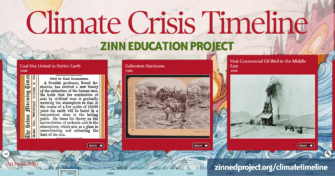
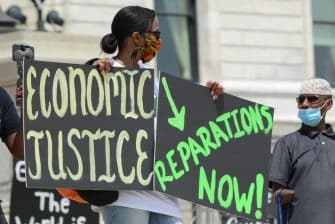

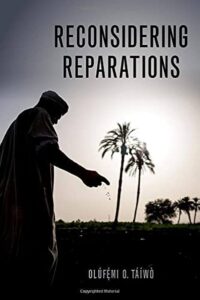


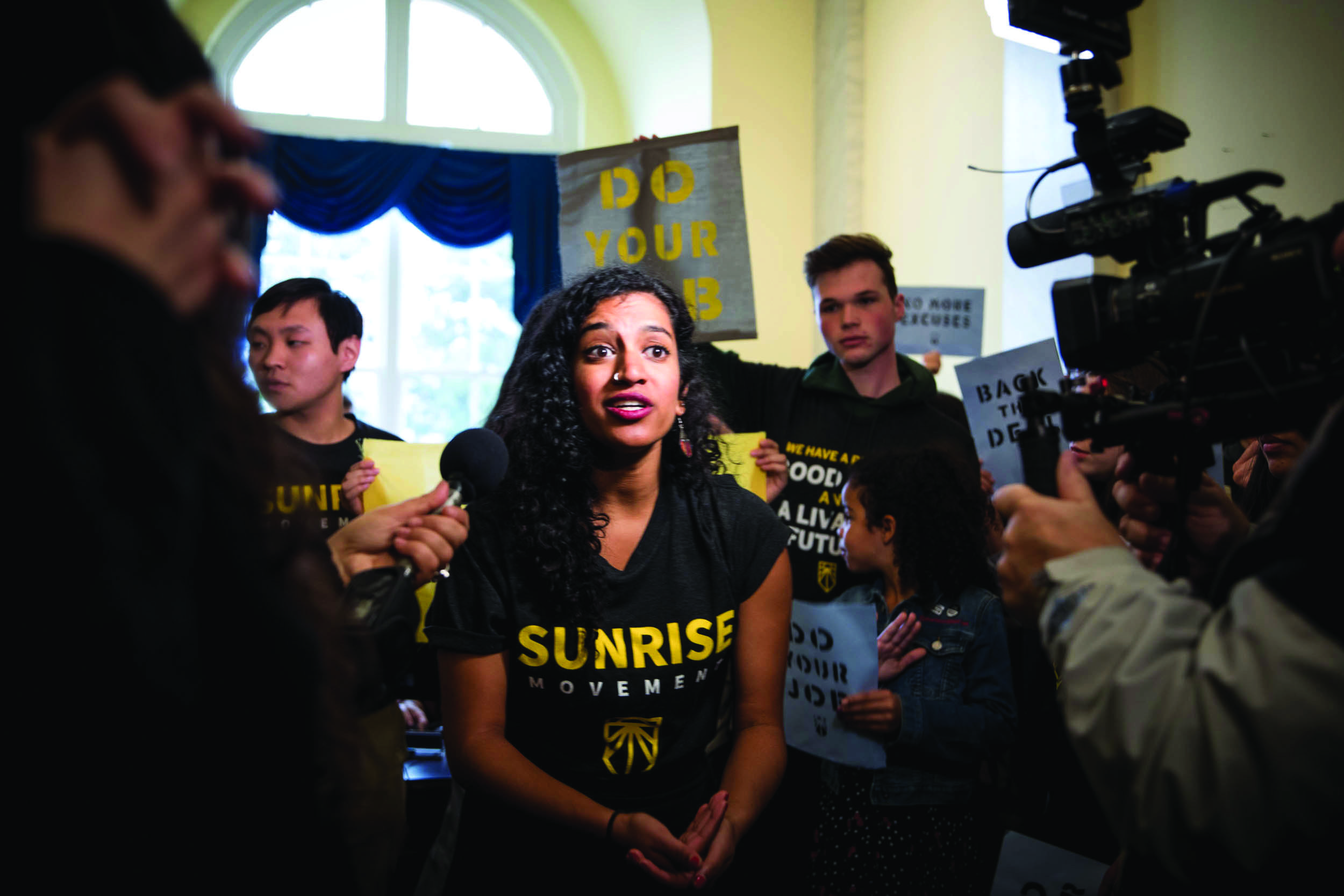
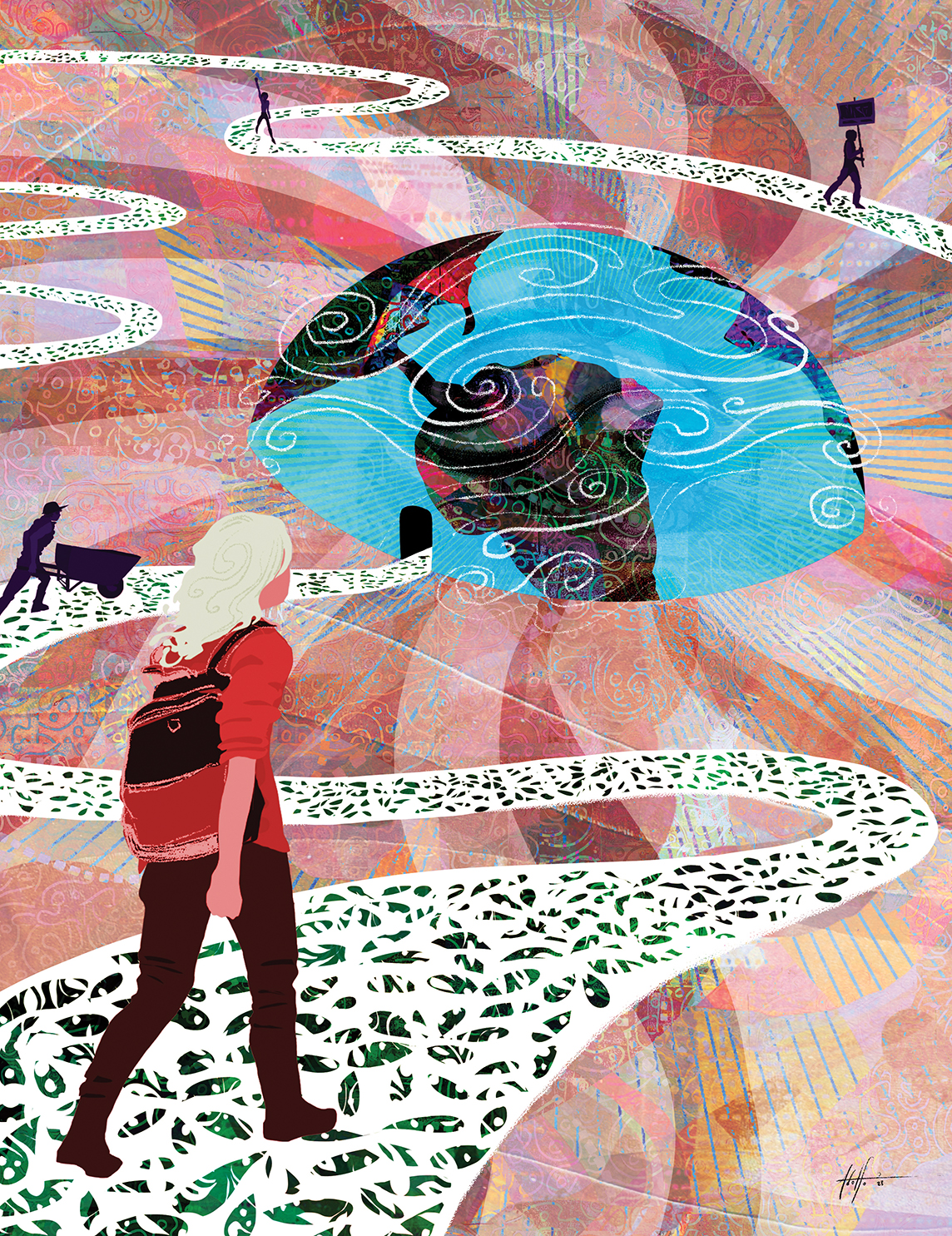
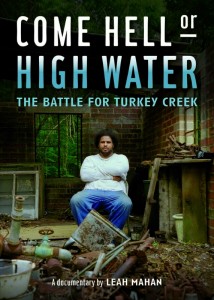






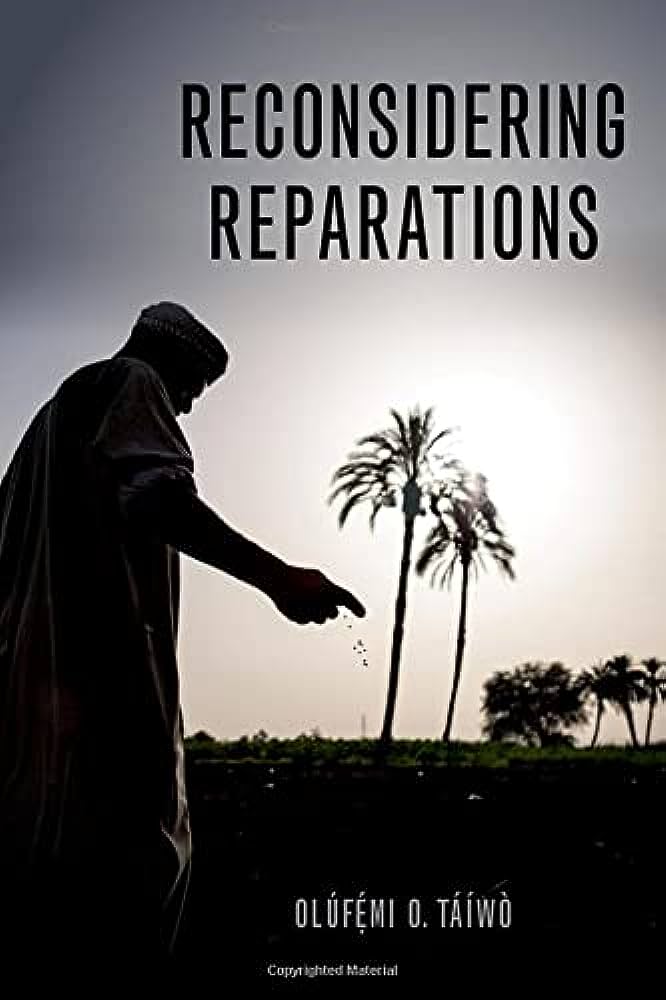
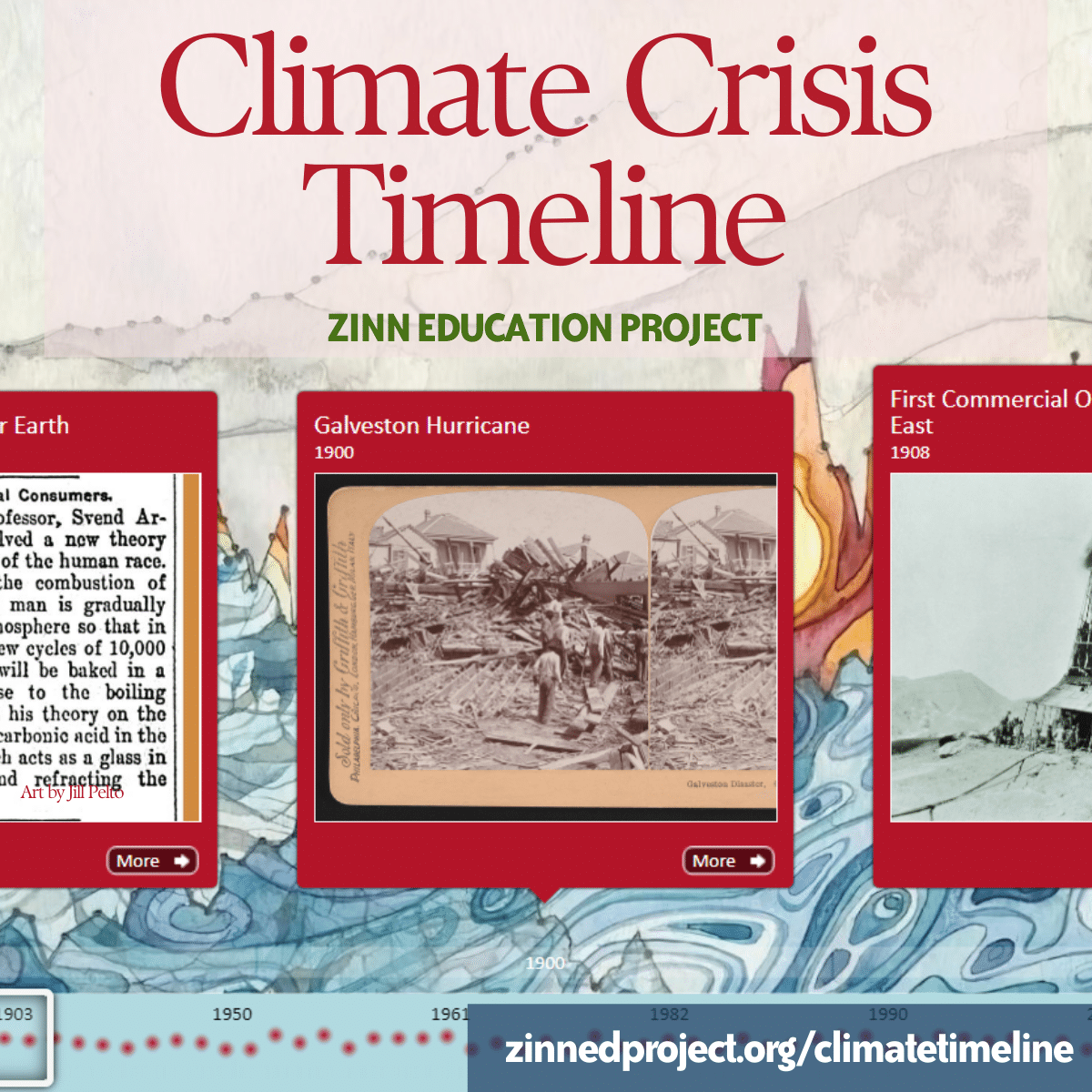
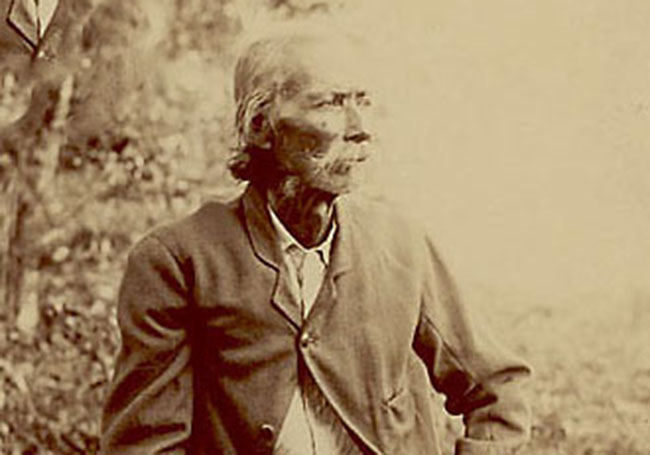
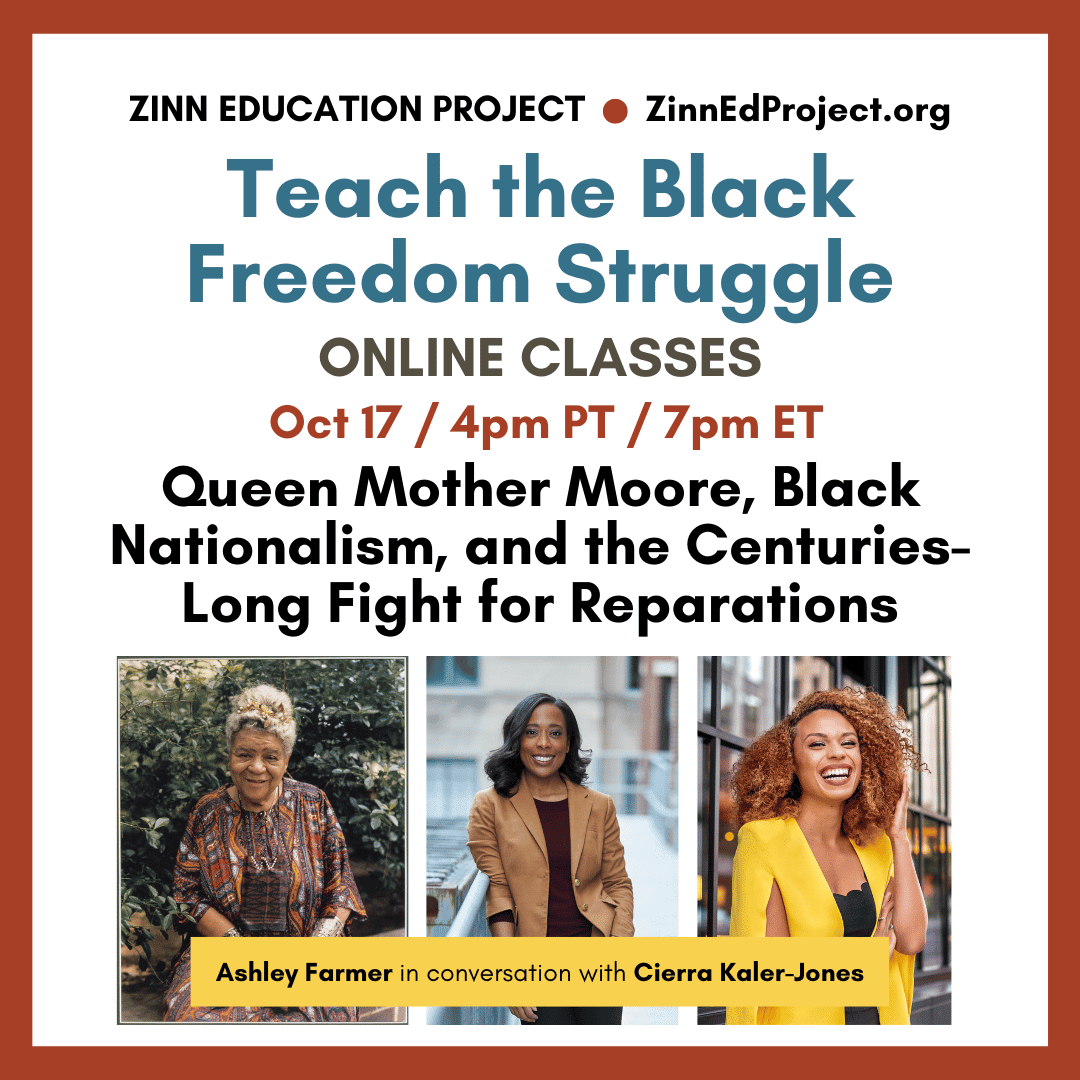
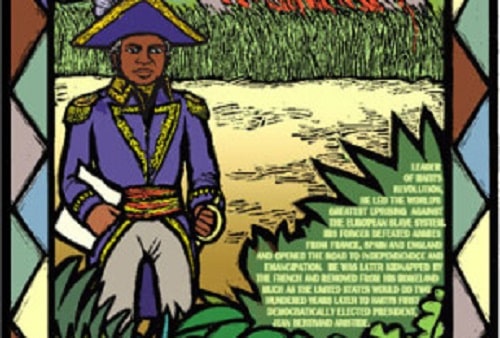

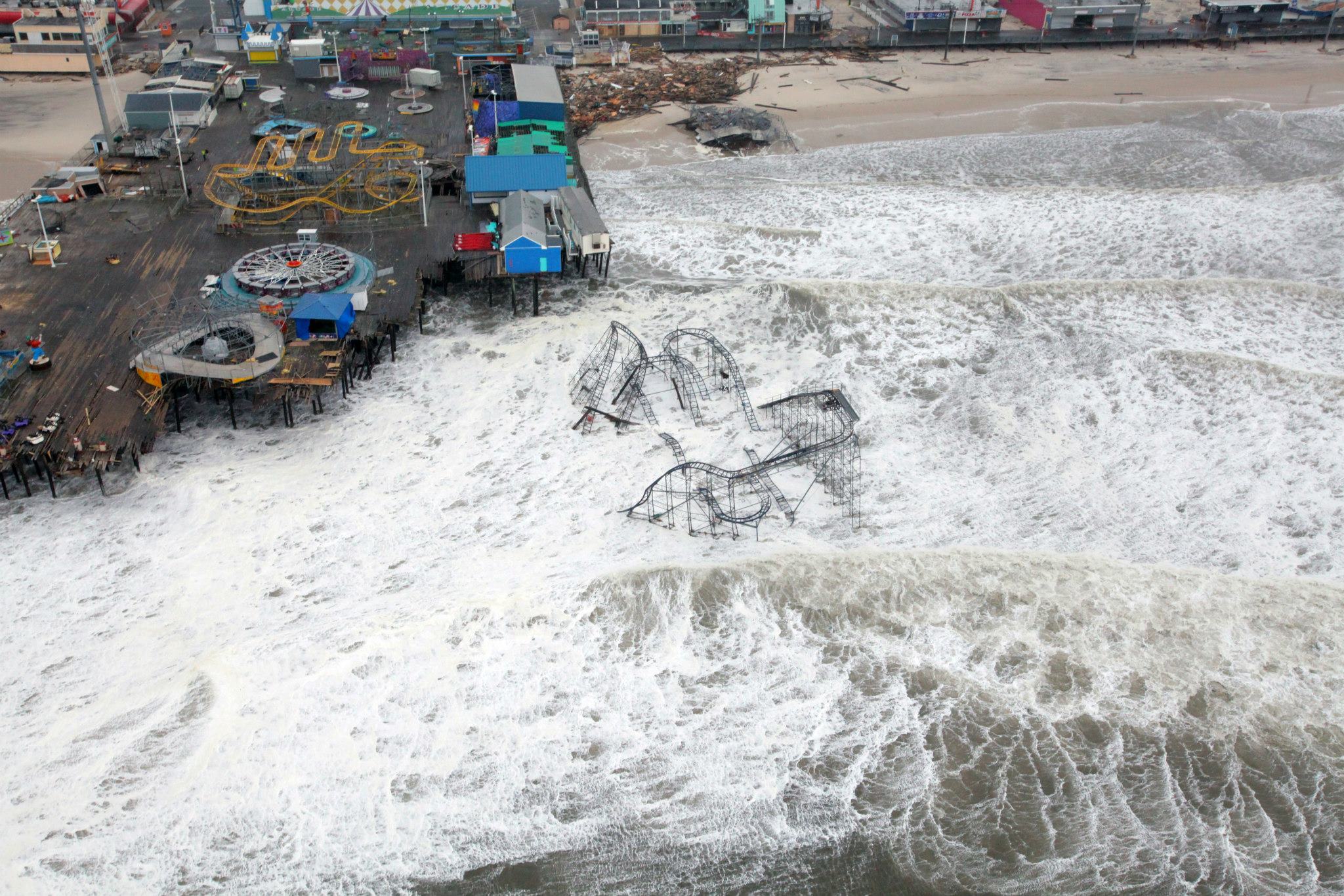
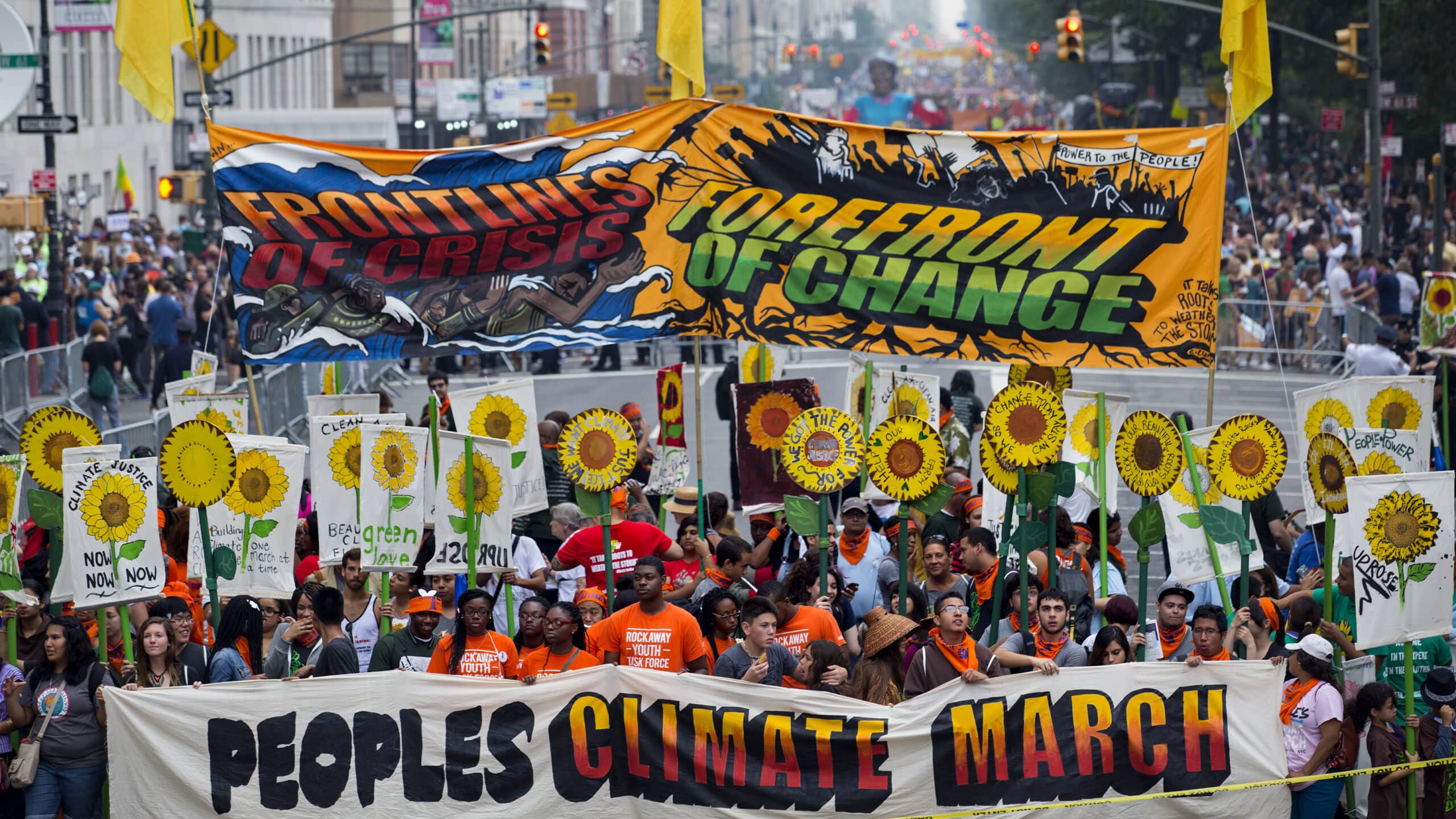





Twitter
Google plus
LinkedIn